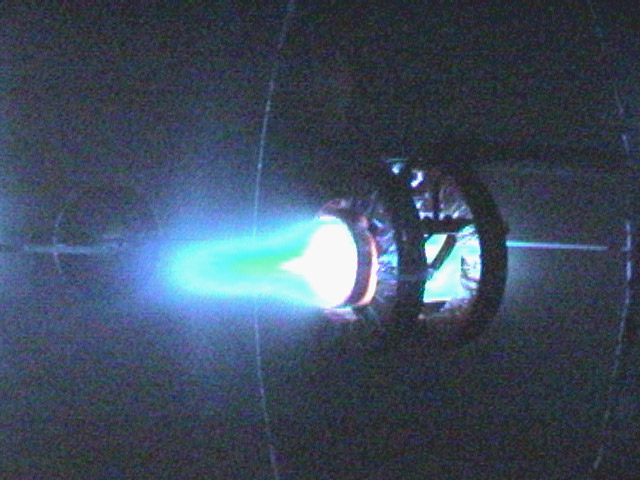Australian Plasma Thruster
The Australian Plasma Thruster (APT) will help deep-space probes travel for longer and further into space and be used to de-orbit satellites at the end of their lifetimes. The engine of the thruster will be based on ANU Professor Christine Charles's Helicon Double Layer Thruster (HDLT), which is the first of its kind in the world.
Research themes
Project status
Content navigation
About

Researchers at the ANU are working with European firm EADS-Astrium, the world’s largest aerospace and aeronautic company, and the Surrey Space Centre at the University of Surrey in the United Kingdom, to develop, build, and prepare for flight a next-generation plasma thruster engine that was invented at ANU. If successful, the engine could be launched into space as part of a prototype satellite as soon as 2013.
The Australian Plasma Thruster (APT) will help deep-space probes travel for longer and further into space and be used to de-orbit satellites at the end of their lifetimes. The engine of the thruster will be based on ANU Professor Christine Charles's Helicon Double Layer Thruster (HDLT), which is the first of its kind in the world.
Plasma thruster engines have characteristics that will eventually lead to their wide deployment as space propulsion systems. They are much less powerful than conventional chemical rocket engines, but in principle can operate at higher efficiencies and for exceedingly long periods of time. This makes them ideal for interplanetary missions. The technology will also find a market in satellite propulsion systems for maintaining orbital space stations, and for end-of-life satellite insertion into graveyard orbits.
Professor Rod Boswell, from the RSPE's Plasma Research Laboratory (PRL), is the APT project leader. He and his colleagues at the laboratory have been awarded a government Australian Space Research Program (ASRP) grant for the project. The funding will contribute to building a space simulation facility within the RSAA's Advanced Instrumentation Technology Centre. This incorporates a large thermal vacuum chamber that will enable testing of the HDLT and other satellite systems in a realistic simulated space environment.
